19. La Grande Illusion (1937)
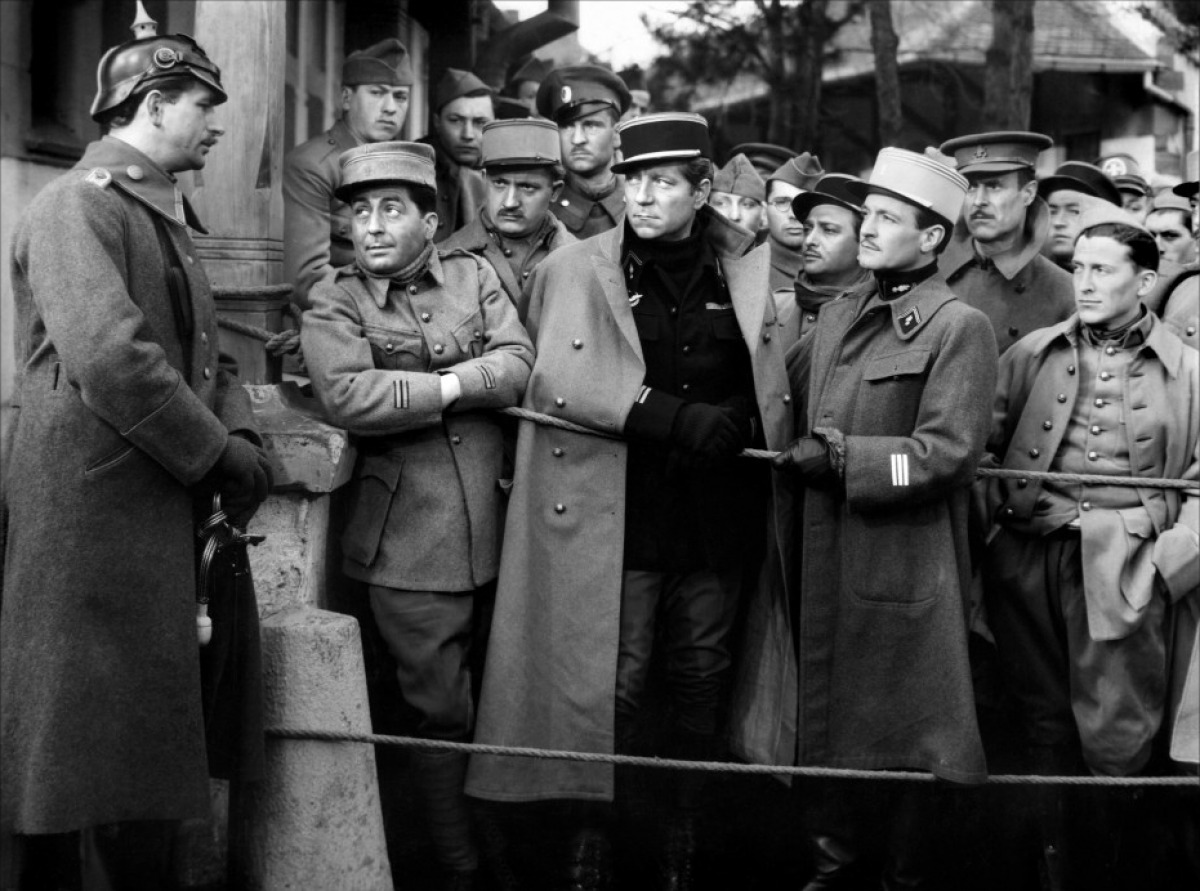
One of the greatest cinematic streaks in history was during the decade of the thirties and the uninterrupted string of masterpieces created by France’s Jean Renior. The son of the great post-impressionist painter Pierre-Auguste Renior, Renior, fils was considered a dilettante for much of the silent period but started to show promise with 1926’s Nana. However, sound, much as with Hitchcock, seemed to set something free in Renior’s creative spirit.
He seemed to get better with each film and for many hit his stride with La Grande Illusion, a World War I based drama concerning what binds and divides people. (It should be noted the title translates not to the romantic sounding “Grand Illusion”, as is often believed, but “The Great Illusion”, a far more meaningful title.)
The plot concerns three Frenchmen incarcerated as prisoners of war by the Germans. Two (the great French star Jean Gabin and the superb Pierre Fresnay) are officers and the third (Marcel Dalio) is not. However, one of the officers (Gabin), a natural ruler and aristocrat, is a simple car mechanic in civilian life while the other (Fresnay) is an aristocrat by birth and class and would normally never cross paths with the other.
The non-officer (Dalio) is wealthy clothing designer but also Jewish and, therefore, considered a bit “other”. The commandant of the fortress holding the men is a German aristocrat (the legendary writer-director-actor Erich von Stroheim), who bonds with his French counterpart over common background and the sad knowledge that their bread is dying out, no matter how the war ends.
Later in the film the character of a German woman (Dita Parlo) in love with one of the men is introduced, adding another layer of bonding and disassociation to the film. Renoir had a great reputation for his kindness and sensitivity in addition to his great skill and it shows here.
There is an element of excitement in the story of the men and their attempts at escape, but the real theme is how the artificial ideas which divide people can lead all the way up to war between countries.
These ideas will lead to both tragedy and salvation for various characters in the film. Many thought and think this the greatest of anti-war films but Renoir sadly noted that it came along less than two years before the biggest of all wars broke out and among the same basic parties represented in his film.
20. The Rules of the Game (1939)
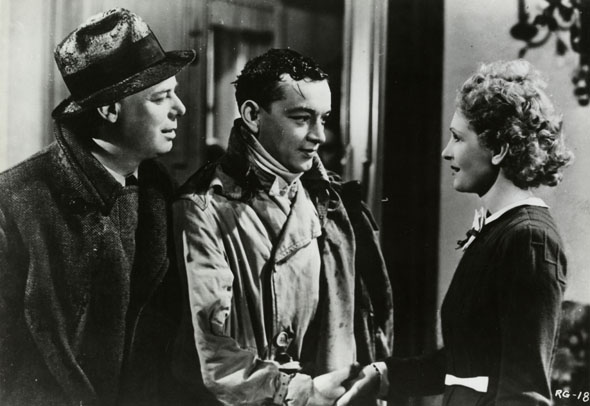
La Grande Illusion was an overwhelming critical and popular success, especially for a European film and became the first (and, for many years, only) foreign language film to ever be nominated for a Best Picture Oscar. Who could top that? Well, a cinematic genius such as Renoir, that’s who. His follow-up to this day is considered to be among the great film ever. However, it didn’t start out that way.
The Rules of the Game was taken from a French farce, The Caprices of Marriane, something from a distant era, even then. The plot centers on a sexual/romantic roundelay ignited by a noted aviator’s crush on an unhappily married woman of the nobility.
The action is largely confined to the lavish chateau of the woman’s titled husband, where a varied assortment of society types, the servants below the stairs and a forlorn character who seems to wander between the two classes seeking some moments of life, are present.
This sounds like a set-up for a frivolous farce where the characters tear around in a variety of colorful and morally suspect situations, all of which seem to come out just fine. This is not that film. Renoir replaces the usual cardboard types with realistic characters and their dubious ethical activities carry real weight, right up to a tragic conclusion.
Added to this, Renoir could see that European culture was teetering on the brink of an abyss and that such irresponsible and self-centered behavior would soon enough result in dire consequences on a large scale (not that the film doesn’t have a sophisticated sense of humor in spades).
Non-Europeans, much less the non-French, may not have caught all of this but the director’s countrymen certainly did and the crowd literally tore the theater apart on the night of the film’s premiere. The Germans hated the film and cut it to ribbons after the occupation, which was the only version thought to exist for years and the one which played to initially bad reviews in the US. However, a historic restoration (one of the first in film history) revealed the film’s greatness.
One notable aspect of the film is the work of a well chosen cast including Nora Gregor, Paulette Dubost, Mila Parély, Julien Carette, Roland Toutain, Gaston Modot, Pierre Magnier and Marcel Dalio in a stunning performance as the shallow and narrow count. Renoir, also an actor, gives his finest performance as the vagrant soul looking for his own place.
Sadly, circumstances conspired to drive Renoir out of Europe just after the film came out and he fled to Hollywood for a not very happy time and back to Europe, where he again made fine films, though not as prominently as before. However, he and the his finest film’s reputations ended up surviving just fine.
21. Ossessione (1943)
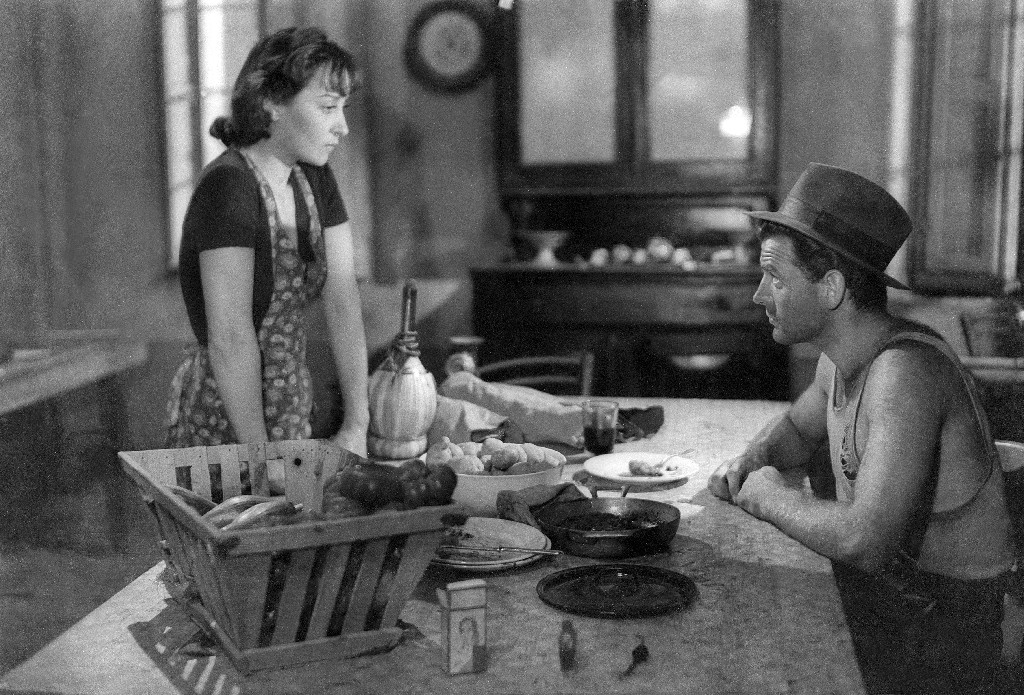
One of the great European film artist, certainly one of the great Italian film makers, was Luchiano Visconti. Born into the aristocracy, Visconti somewhat rejected his grand place in Italian society in order to express himself artistically on film. He was open gay and Communist (not as big a point of controversy in Italy as elsewhere) and fascinated with the people at the other end of the social spectrum from himself (though he did return to his own class as a subject during his career).
He started his career as Renoir’s assistant director in France but returned to Italy during the war years. He got his big chance at directing by making a fine film in disreputable circumstances.
During the thirties, the US novel The Postman Always Rings Twice was a hot item. It told the story of two young and hot (if sleazy) lovers who decide to kill the woman’s much older husband for the run-down diner the man owns. There was lots of sex and violence and Hollywood wouldn’t touch it for years (and the two Hollywood attempts at it in later years were variable).
Italy was at war with the US and, among other things, the Italian film industry was constantly adapting American books…without paying for the rights to do so. One might well think that such a tale would not have been Visconti’s thing but the operatic style the author used to tell the story interested him and he also wanted to explore the grittiness of lower class Italian rural life. This element has caused many to consider the film to be a forerunner of the soon to be born Neo-Realist movement.
Although the visual style was a revelation, the handling of the social milieu was also telling and pointed the future way for Visconti’s career. The Fascist government, which had expected a more mundane film, hated and tried to destroy the film, literally (the director hid the negative in his family’s home).
Sadly, the legal quirks surrounding the adaptation barred the film from showings in the US and other places until 1976. However, it proved worth the wait, both as the best adaptation of the novel and a milestone in European film history.
22. Day of Wrath (1943)
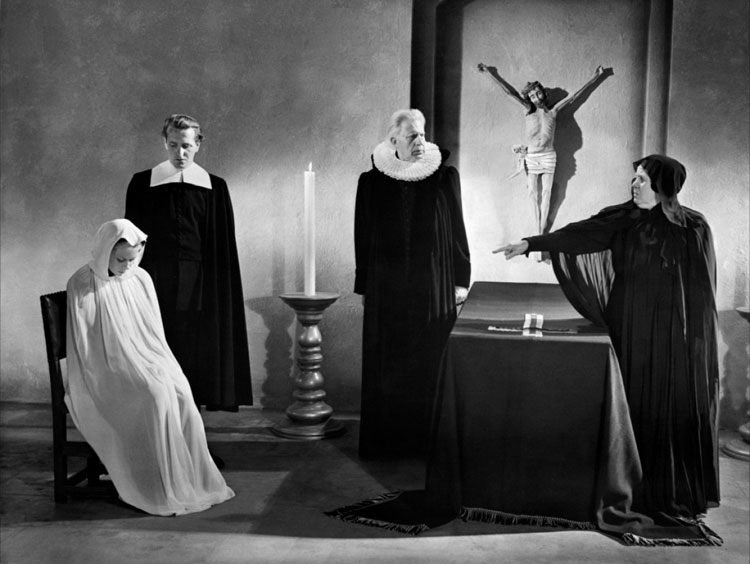
After The Passion of Joan of Arc, Carl Theodore Dryer created what might be termed a spiritual horror film with the multi-national production Vampyr in 1932, much admired today but a big and misunderstood flop at the time. Thanks to that failure, there was not another Dreyer film until he returned to his native Denmark and created his powerful classic Day of Wrath.
Taken from an early Twentieth Century play, the film concentrates on the nature of evil and how wicked thoughts and emotions can exert a powerful force on those in the orbit of the evil ones.
Set in the 17th century Denmark, an elderly woman, who has been accused of witchcraft, is being hunted down. She flees to the home of the young wife of middle aged minister since she and the woman’s late mother had been partners in crime long before. The young woman gives her up to the pursuers and the older one literally curses the young wife on her way to the stake.
The curse soon enough goes into effect as the woman’s step-son, a man of her own age, comes home after a long time away and the two begin to fall in love, an unhappy situation observed by the woman’s aged and sharp-witted mother-in-law, who proves a formidable foe.
Like all Dryer films, this one goes at its own deliberate pace and his eye for composition is as superb as ever. The acting of the little known cast (Thorkild Roose, Lisbeth Movin, Sigrid Neiiendam,Preben Lerdorff Rye, and Albert Hoeberg) is also quite fine. The film has many powerful scenes and comes to a shattering climax.
The film, thanks mainly to its slow pace and ultra-serious style, didn’t do well with critics and audiences in its homeland during the war and in the US shortly thereafter but it has gained in stature greatly over the years and is now considered one of the masterpieces of world cinema. Dreyer was in full control here but, ironically, the two remaining decades of his life would yield only two more films (which followed the same historical pattern as this one).
23. The Children Are Watching Us (1944)
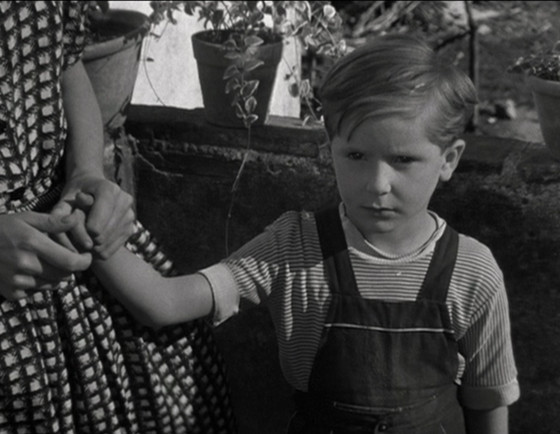
When the subject of the vastly influential Neo-Realist film movement in Italy is considered, the name of Vittorio de Sica is always at the top of list of great names in the movement. His Shoeshine (1946) and Bicycle Thieves (1948) are not only among the great films of that movement but of world cinema ever.
Lesser known and coming just before that movement is another film with prefigures the masterpieces to come and showcase the film maker’s interest in innocence and how the ways of the world destroy it, The Children are Watching US.
The plot focuses on a young boy named Prico, an angelic child growing up in a less than heavenly household. His parents are not happy together, principally due to his faithless mother’s restless nature and wandering eye. His father is sober and responsible and tries to accommodate his wife’s blatant infidelities for the sake of his child. However, sacrifice can only go so far and the father’s ultimate despair will lead to devastating results.
Though not his first film, this was de Sica’s breakthrough and shows his sensitivity and compassion. He was also an actor and understood how to connect to his cast, which was made up of actors of no great fame or reputation, but who gave fine performances. De Sica had the talent to transcend just one moment in cinematic time and would remain a great director and noted actor for the rest of his days.
24. Children of Paradise (1945)
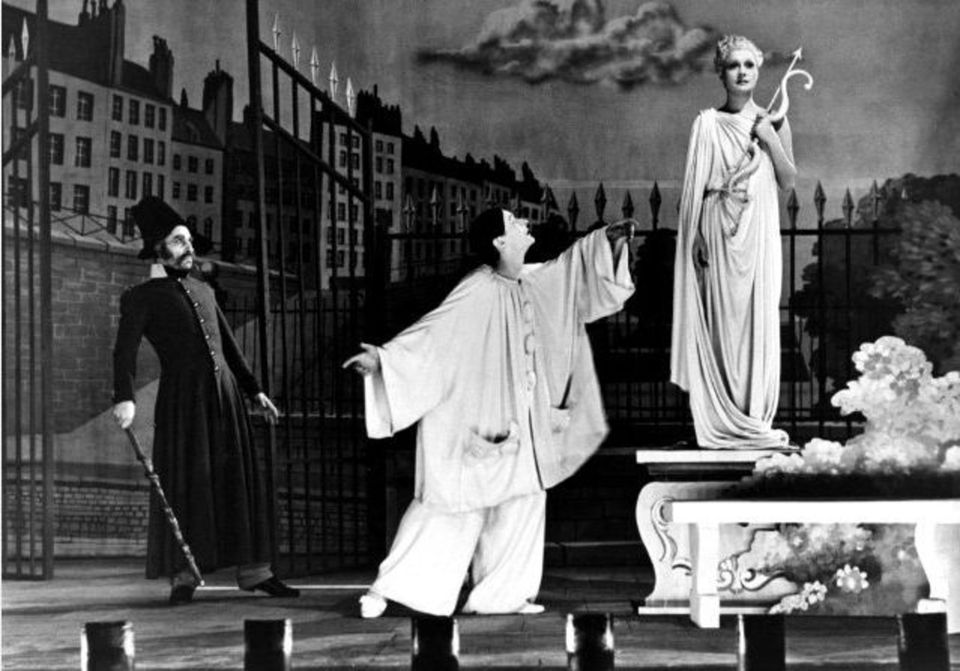
Long beloved as one of the treasures of world cinema, The Children of Paradise is an example of filmic alchemy, a picture greater than the sum of its considerable parts. The period epic was made during the even more dramatic period of the last days of World War II as the beleaguered French struggled to circumvent their German captors.
The production involved lavish sets, a multitude of lush costumes, and a legion of extras, backing a large main cast (and several fugitives from the enemy, many starving and desperate souls, were included hidden in the extras).
The film was the product of the writer Jacques Prevert and director Marcel Carne, who had created some notable films in the half decade prior to their magnum opus, but never anything quite approaching this effort.
The Balzac-esque story is set in 19th century Paris in a disreputably colorful section known as “the Boulevard of Crime”. There dwells, among others, a talented but vain young actor (the great Pierre Brasseur)at the start of his career, a wily, brilliant, cynical and morose career criminal (Marcel Herrand) and a extraordinary young mime (a memorable Jean-Louis Barrault), also at the beginning of his career (the film is full of performances and theater of various types).
What ties them together is their love/fascination for a goddess-like woman (the unforgettable Arletty). The woman, Garrance, is a law unto herself, sprung from nowhere and answering to no one, she loves only the mine but, even then, only on her own terms. (Maria Casares and Pierre Renoir, brother of Jean, also have memorable turns.)
The story weaves a complex web of crime, fame, fortune, love of an often tragic nature, and ironies and sadnesses of all kinds (though the film itself is an exhilarating experience). The picture is often called the “Gone With The Wind” of France (which, frankly, shortchanges this film a bit) and its making was arduous in the extreme with key members of the cast and crew in hiding from the Germans or, later, on the run for having collaborated with the enemy.
There were shortages and catastrophes and the Germans were going to force the long film to be edited into two parts (averted, though there is a intermission still where the cut was to be made).
It would be nice to say that this was a portal to all kinds of greatness for all involved but that was not to be. Brasseur went on to a good career but everyone else went downhill, some faster than others. Well, how many people ever participate in something so glorious? This is their monument and one of the films which justifies the existence of cinema.